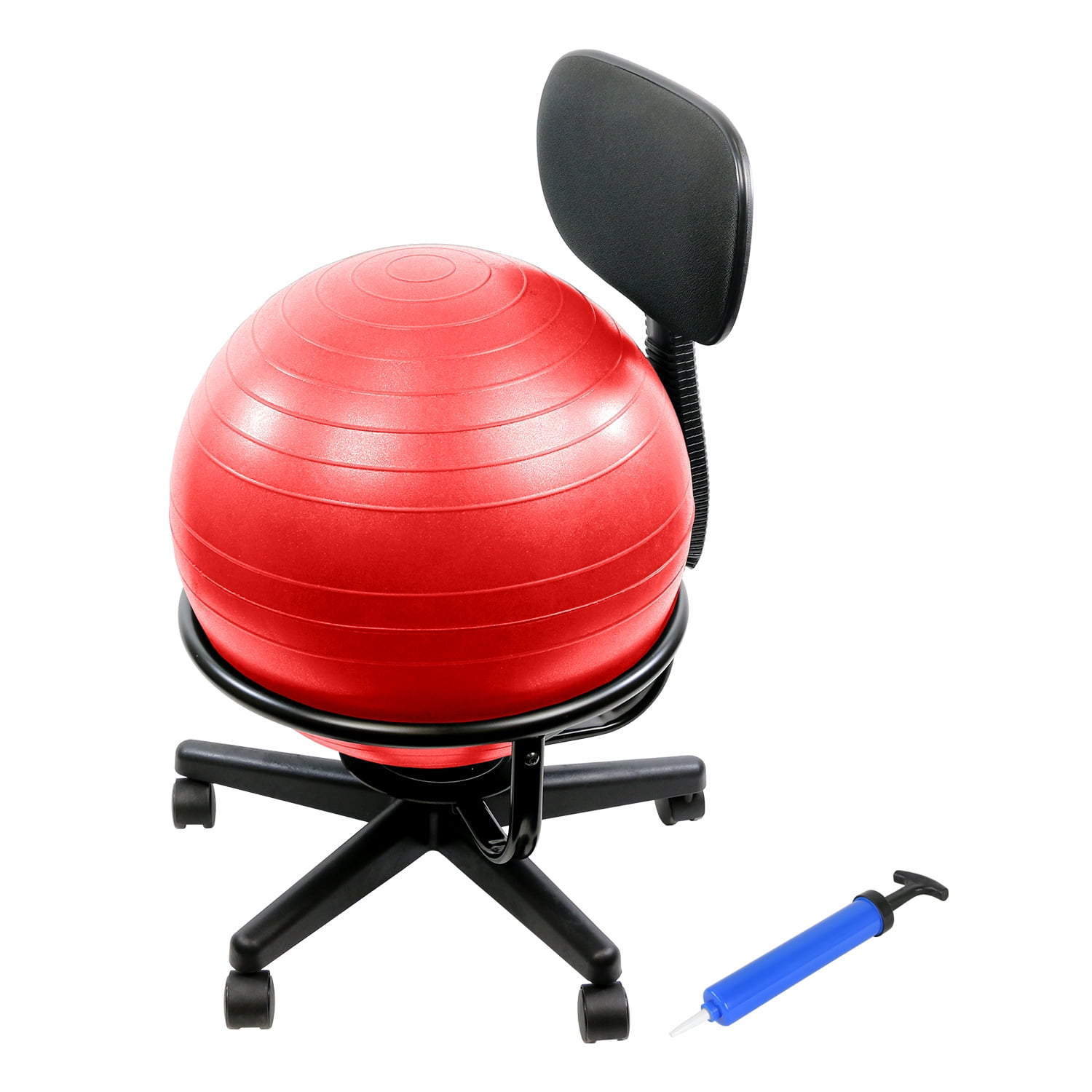Ergonomic Considerations and Health Benefits

The desk ball chair, with its unique design, offers a compelling alternative to traditional office seating, promising significant ergonomic advantages and contributing to improved health and productivity. Unlike static chairs, the ball chair encourages constant, subtle movements, actively engaging core muscles and promoting better posture. This dynamic approach to seating counters the detrimental effects of prolonged sitting, a major contributor to various health issues.
The inherent instability of the desk ball chair forces the user to maintain an active posture, engaging core muscles to stay balanced. This constant micro-adjustments throughout the day prevent the slouching and stiffness often associated with traditional office chairs. Improved posture directly impacts back health, reducing strain on the spine and mitigating the risk of developing back pain, a common ailment among office workers. Furthermore, increased movement stimulates blood circulation, improving energy levels and focus, ultimately boosting productivity.
Posture and Movement’s Impact on Back Health and Productivity
Maintaining proper posture is paramount for back health. Poor posture, often characterized by slouching or hunching, puts undue pressure on the spine, leading to muscle strain, stiffness, and potentially long-term problems like herniated discs or spinal degeneration. In contrast, good posture—achieved by sitting upright with the back straight, shoulders relaxed, and feet flat on the floor—distributes weight evenly across the spine, minimizing strain. The dynamic nature of the desk ball chair actively promotes better posture by requiring continuous engagement of core muscles for balance. This constant adjustment keeps the spine aligned and prevents prolonged periods of static posture, a key factor in back pain. The resulting increase in blood flow and reduced muscle tension contributes to increased alertness and reduced fatigue, thereby enhancing productivity. Studies have shown a strong correlation between good posture and improved cognitive function.
Optimizing Posture and Comfort with a Desk Ball Chair, Best desk ball chair
Utilizing a desk ball chair effectively requires conscious effort and practice. To maximize its ergonomic benefits and minimize discomfort, consider these practical tips:
- Maintain an upright posture: Avoid slouching or leaning too far forward or backward. Imagine a string pulling you upwards from the crown of your head.
- Engage your core muscles: Actively engage your abdominal and back muscles to maintain balance and stability on the ball. This helps support your spine and improves posture.
- Adjust your desk height: Ensure your desk is at a height that allows your elbows to be bent at a 90-degree angle while typing. This prevents strain on your shoulders and neck.
- Take regular breaks: Get up and move around every 30-60 minutes to stretch your legs and back. This helps prevent stiffness and fatigue.
- Use a footrest (if needed): If your feet don’t comfortably reach the floor, use a footrest to maintain proper leg posture and circulation.
- Perform simple stretches: Incorporate simple stretches throughout the day to alleviate muscle tension. For example, shoulder rolls, neck stretches, and back stretches can help maintain comfort and flexibility.
Buying Guide and Considerations: Best Desk Ball Chair

Choosing the right desk ball chair involves careful consideration of your individual needs and workspace. This guide provides a step-by-step process to help you navigate the selection process and find the perfect chair for optimal comfort and productivity. Remember, a well-chosen desk ball chair can significantly improve your posture and overall well-being.
Selecting a Desk Ball Chair: A Step-by-Step Guide
First, assess your individual needs. Consider your body type, the amount of time you spend seated, and the specific tasks you perform at your desk. Do you require extensive adjustability? Do you prioritize comfort over mobility? Next, define your budget. Desk ball chairs range in price, and setting a budget early will help narrow your search. Finally, read reviews and compare models from reputable brands before making a purchase. This will give you a good overview of the chair’s performance and durability.
Key Features of a High-Quality Desk Ball Chair
Several key features distinguish a high-quality desk ball chair from a less desirable one. Stability is paramount; the chair should feel secure and prevent sudden tilting or rolling. Durability is essential; look for robust construction materials and reinforced components that can withstand daily use. Adjustability is crucial for personalized comfort, allowing you to customize the chair’s height and tilt to match your body and workspace. Finally, consider the chair’s base; a wide, stable base is preferable for enhanced balance and safety.
Comparison of Desk Ball Chair Materials
The choice of materials significantly impacts a desk ball chair’s durability, comfort, and aesthetics. Below is a comparison of common materials used in desk ball chair construction.
| Material | Durability | Comfort | Cost |
|---|---|---|---|
| Plastic | Generally durable, but can crack under significant stress. | Can be less comfortable than other materials, particularly in hot climates. | Typically the most affordable option. |
| Metal | Highly durable and resistant to damage. | Can be less comfortable without adequate padding. | More expensive than plastic, but less than high-quality fabric options. |
| Fabric | Durability varies greatly depending on the fabric type and quality. | Generally comfortable, offering breathability and cushioning. | Can range in price, with higher-quality fabrics costing more. |
| Wood | Highly durable and aesthetically pleasing, but requires careful maintenance. | Can be uncomfortable without proper padding. | Expensive, but offers a luxurious and long-lasting option. |
Measuring Your Workspace for Proper Chair Fit
Accurate measurement of your workspace is vital to ensure proper chair fit and optimal comfort. Measure the height from the floor to your desk surface. This will determine the ideal height adjustment range for your desk ball chair. Next, measure the depth of your workspace to ensure sufficient legroom. Finally, consider the width of your desk and the chair’s footprint to prevent overcrowding. For example, a person who is 5’4″ might need a chair with a lower height adjustment range than someone who is 6’2″. Insufficient legroom can lead to discomfort and poor posture.
